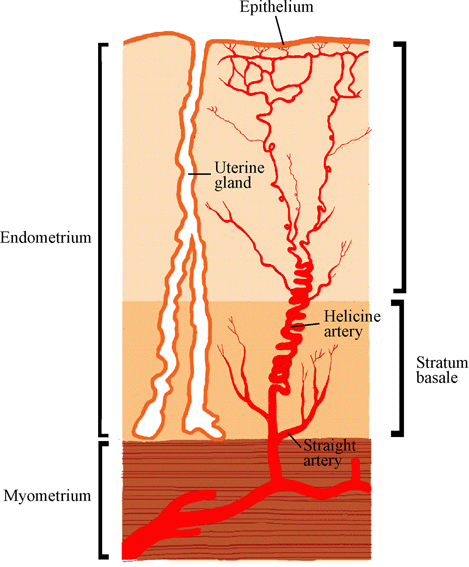PP2.H3.4 +D1 The Uterus
The Uterus:
- The uterus is a pear shaped pelvic organ which is described in three parts fundus, body, cervix
- The fundus and body have a similar structure
- The structure of the cervix is considered separately
- The uterus has a thick (smooth) musclular wall
- Internal to the muscle layer lies the endometrium
- This consists of a simple columnar epithelium (which lines the uterine lumen) on a layer of connective tissue
- The epithelium regularly indents into the underlying connective tissue to form uterine (endometrial) glands
- The endometrium has two layers, the stratum functionalis and the stratum basale
- The stratum functionalis is the more superficial layer
- Its morphology changes in response to the hormonal changes of the menstrual cycle
- It receives blood via helicine arteries which are able to become occluded and starve the stratum functionalis of blood
- This leads to ischaemia of the tissue and the loss of this layer of tissue on a cyclical basis (menstrual flow)
- The stratum basale is not as affected by the changing hormonal environment of the menstrual cycle
- It acts as a reserve of the connective tissue of the endometrium, and contains the tips of the endometrial glands, both of which contribute to repair of the endometrium after menstruation
- Its arteries, straight arteries, do not become occluded during the menstrual cycle
Question:
Answer Submitted
Diagram of Wall of the Uterus:

